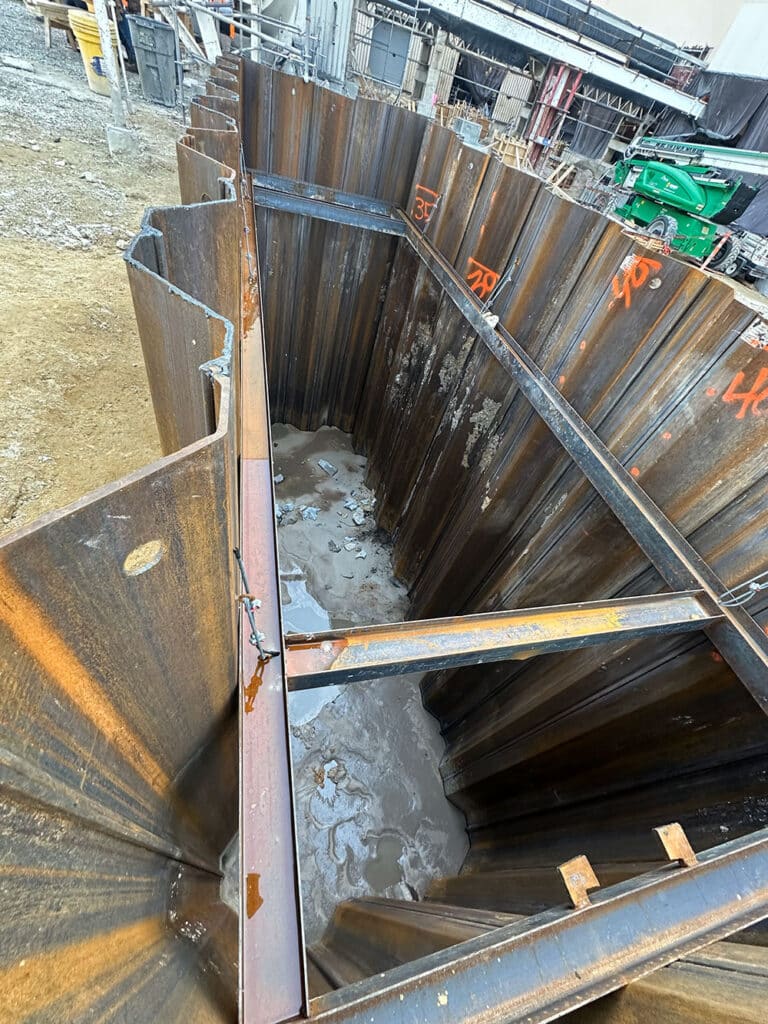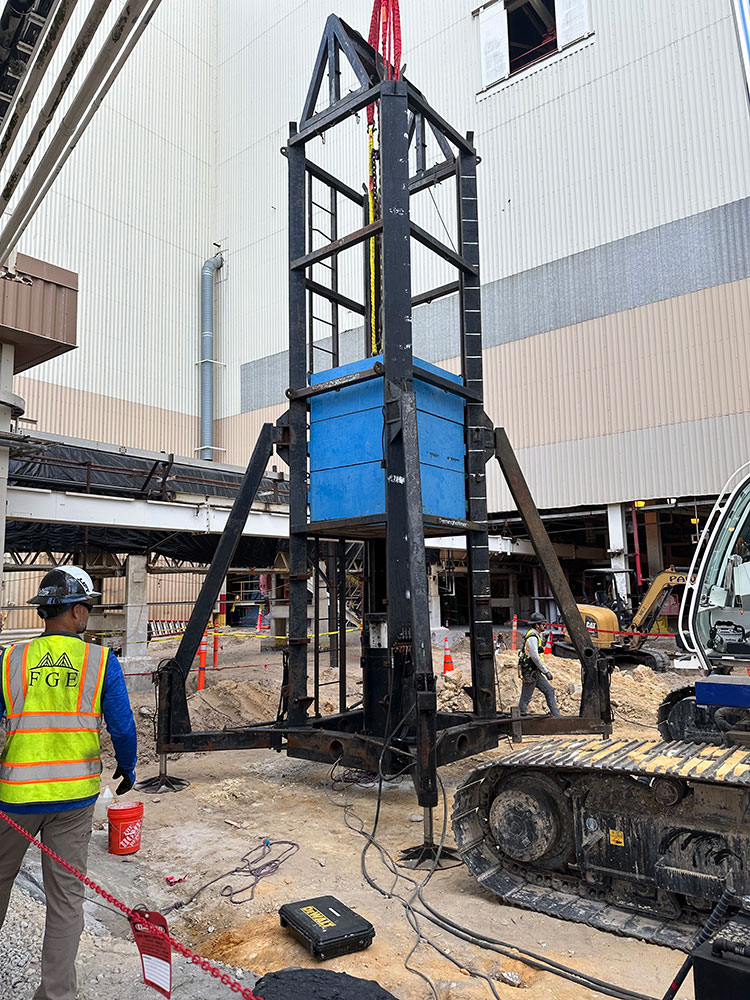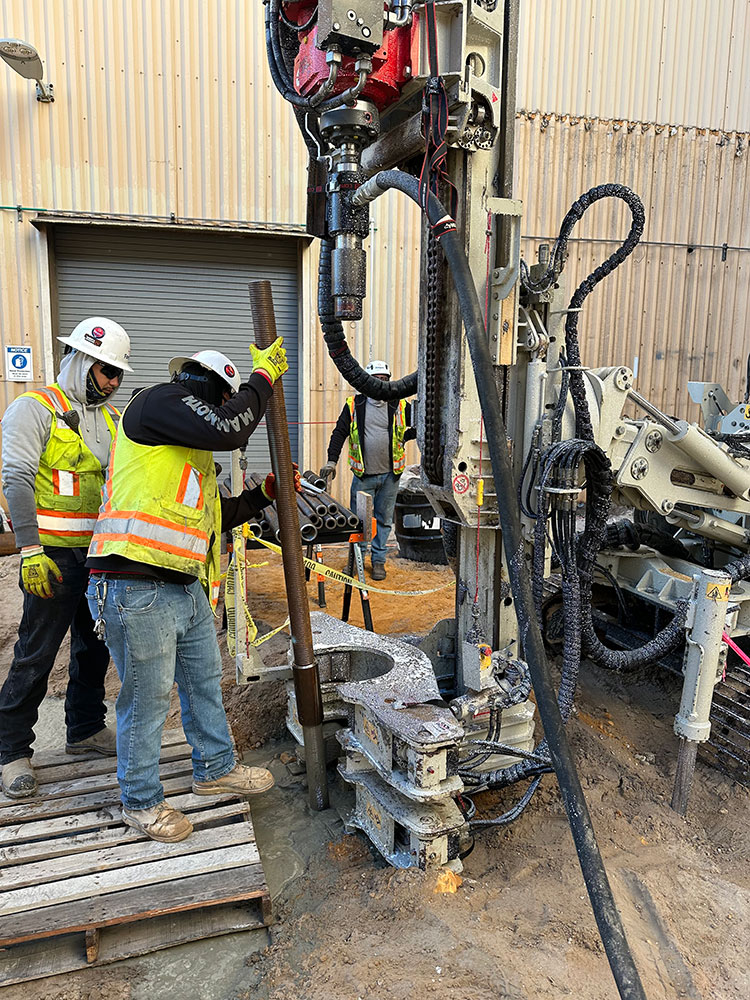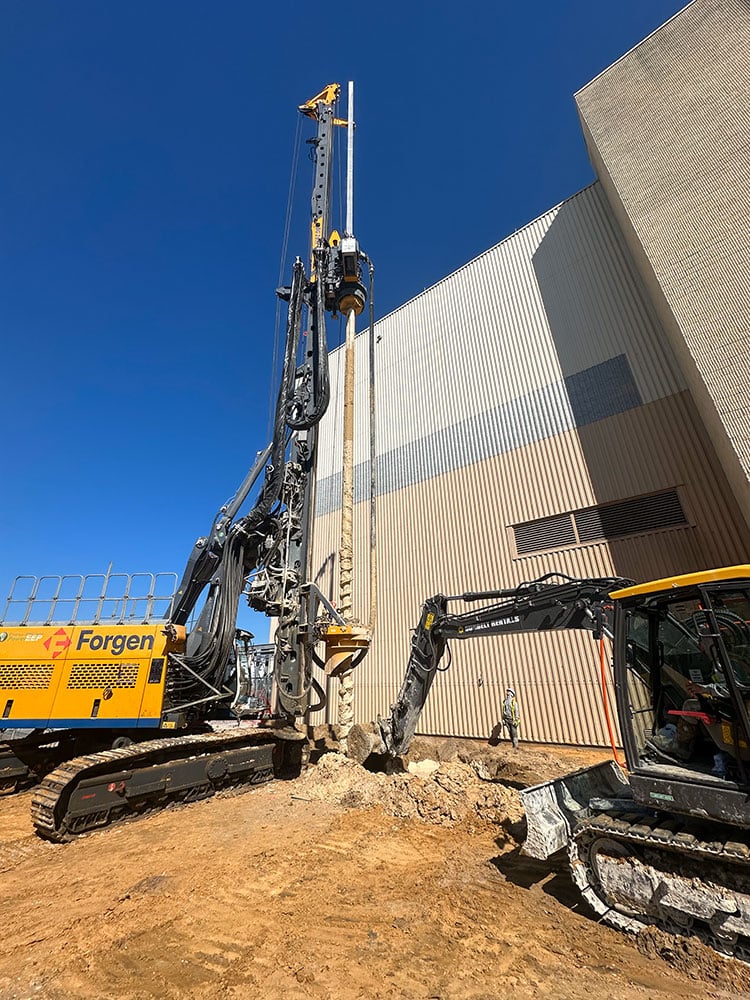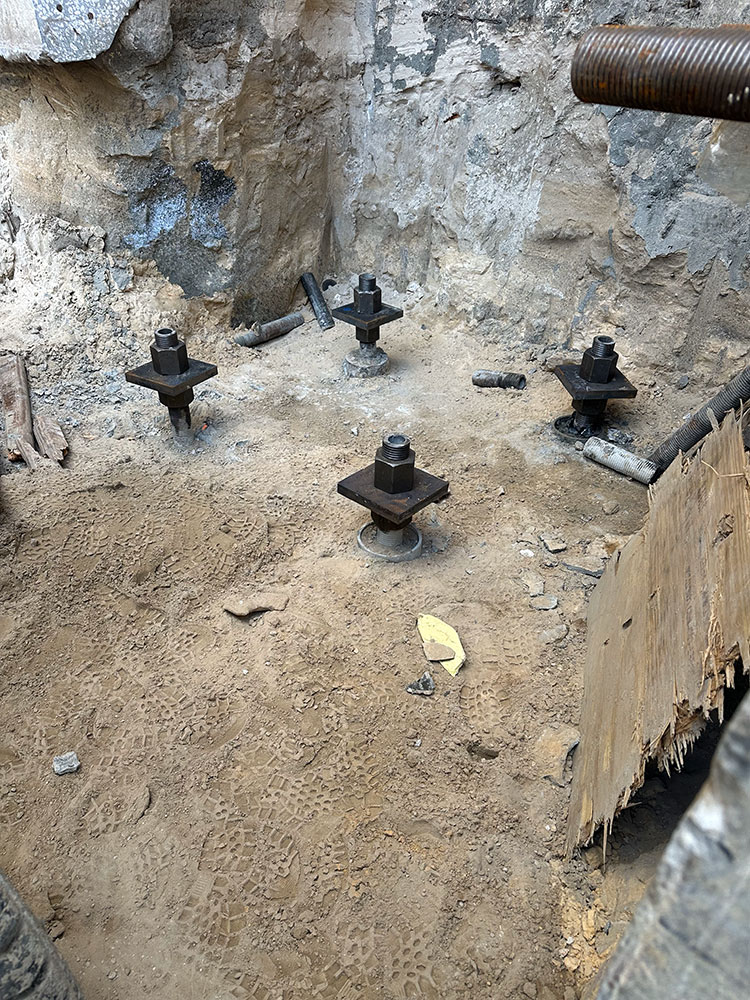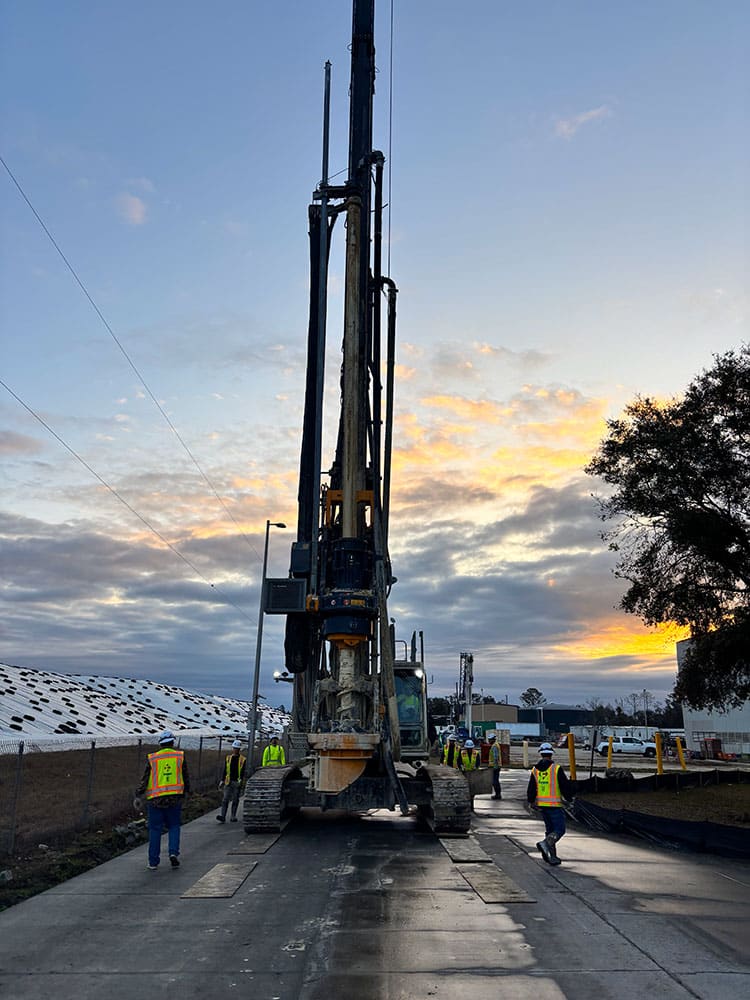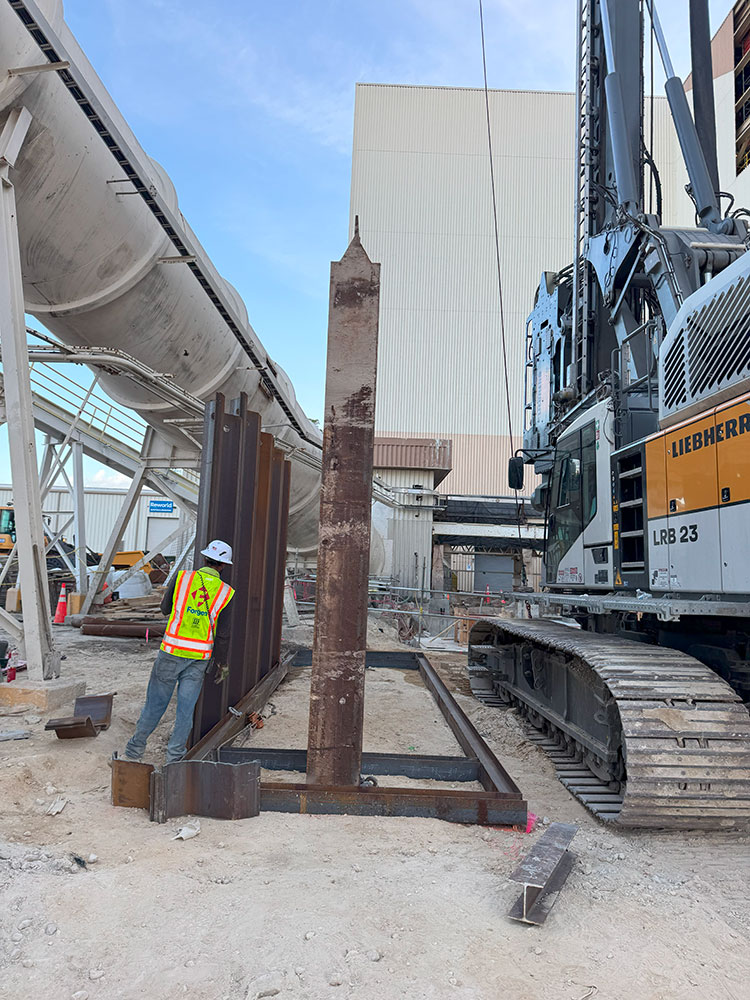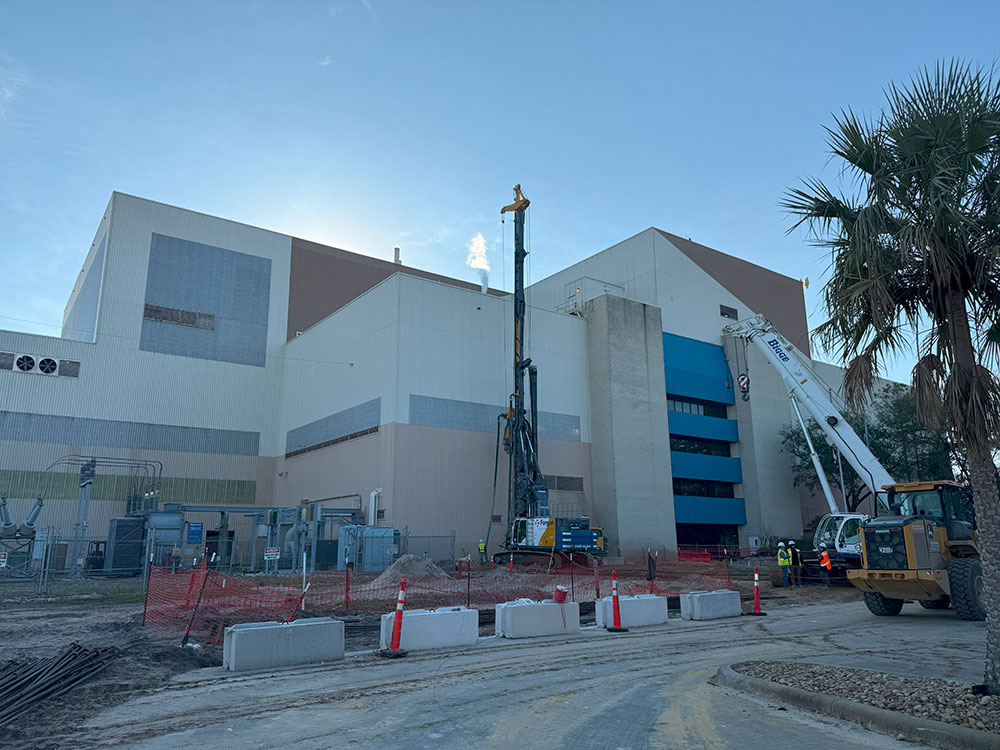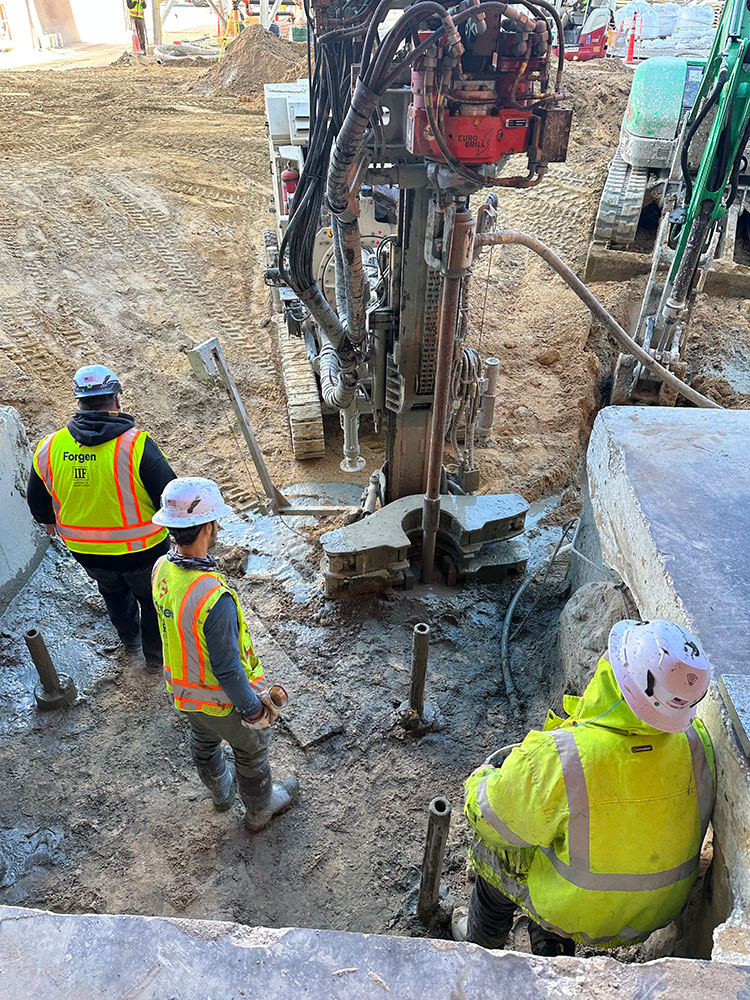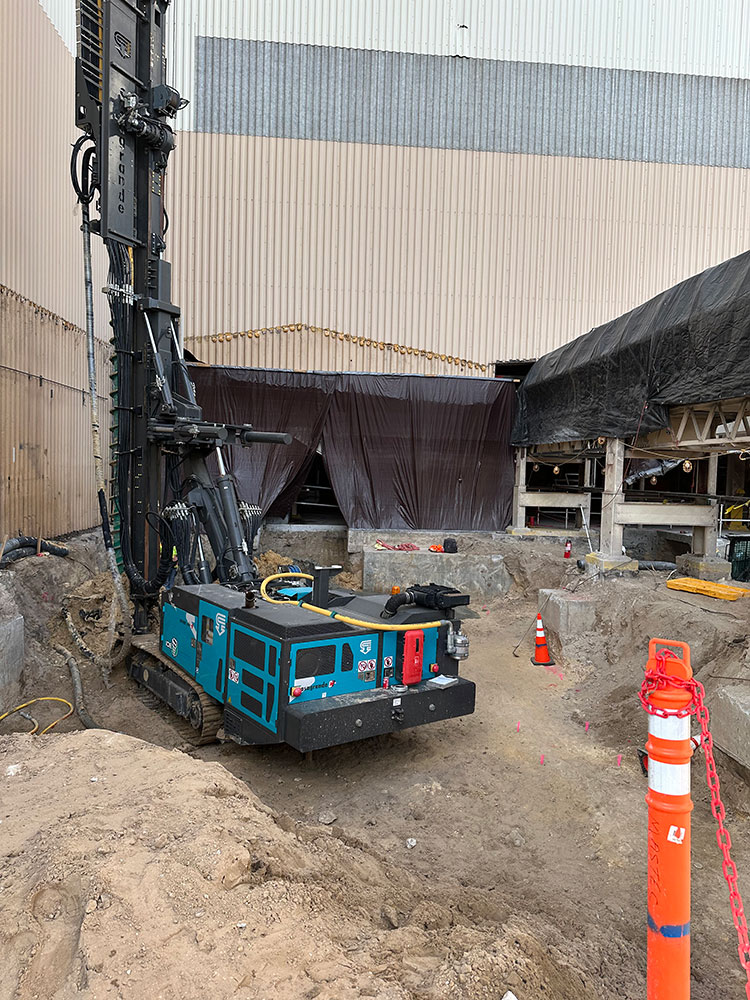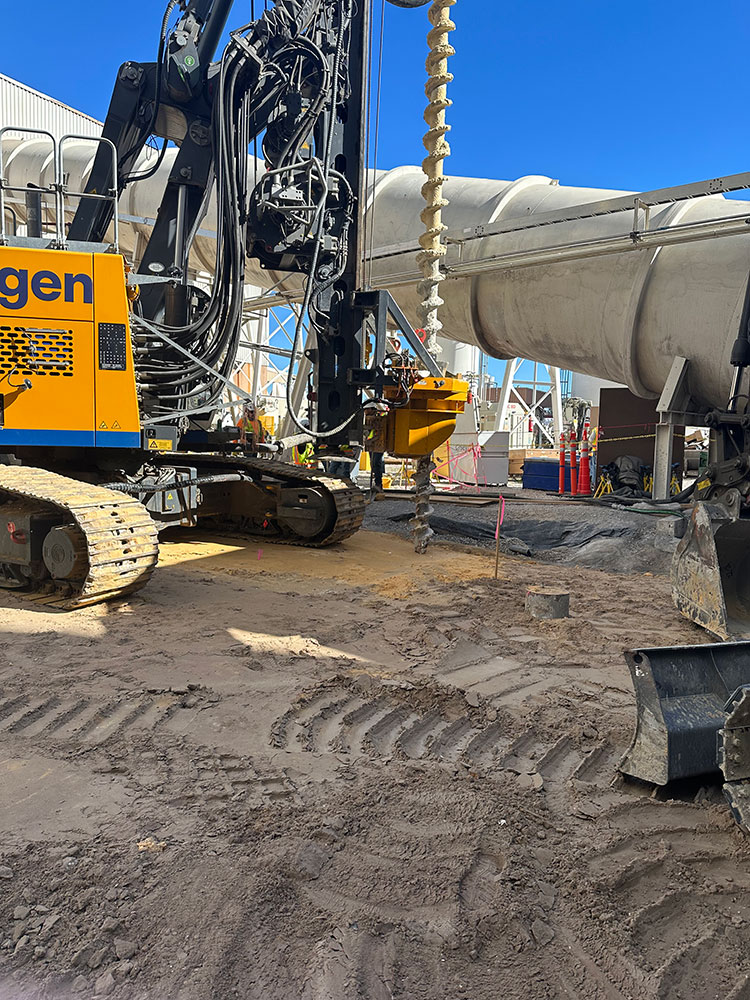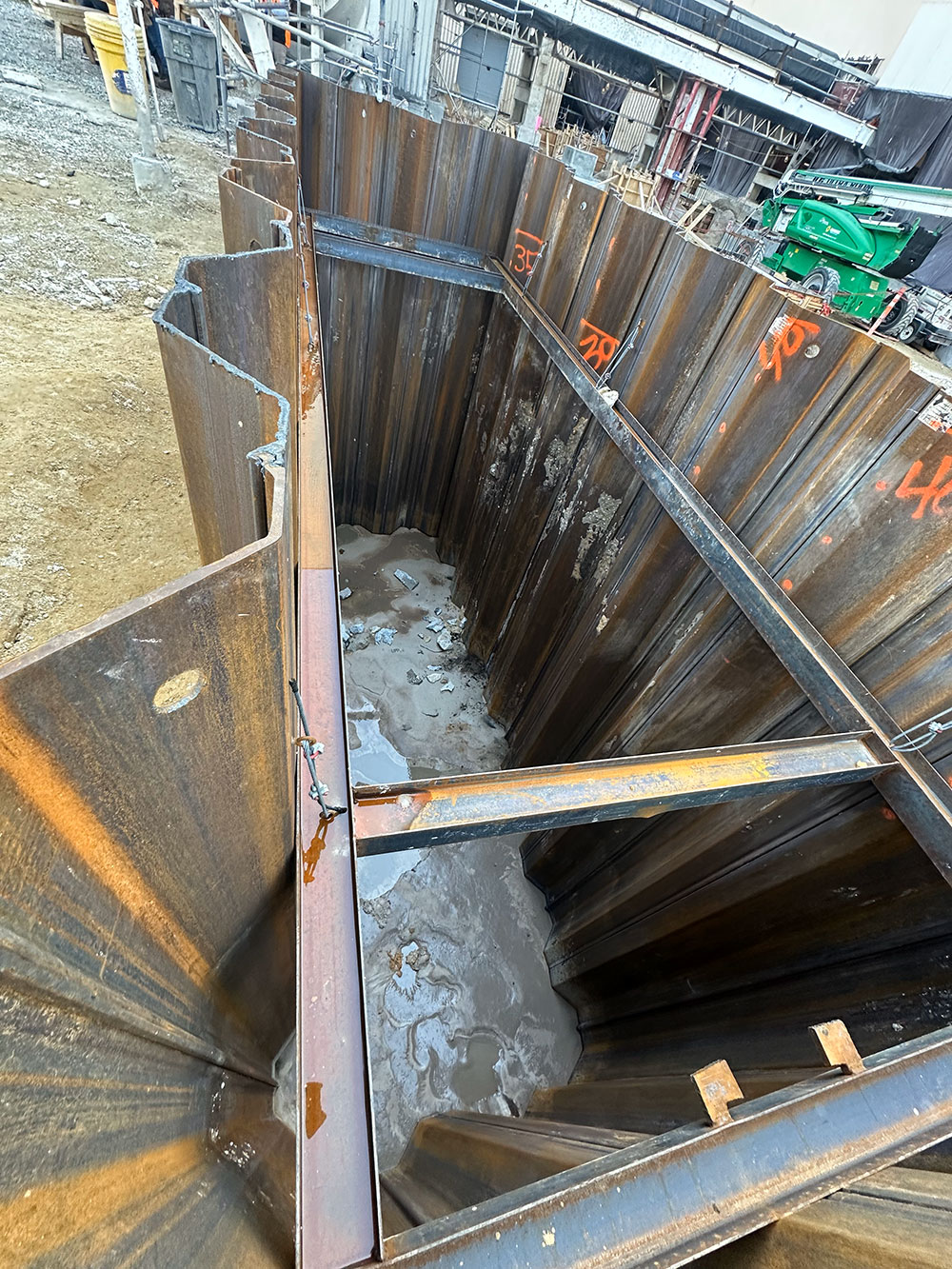Foundation Support for WTE Facility Expansion
Challenge
One of only ten waste-to-energy (WTE) incinerators operating in Florida, this facility provides approximately 30 megawatts of electricity by converting municipal solid waste into renewable energy for a rapidly growing population. To meet increased waste disposal demands and extend the life of local landfill space, the facility is undergoing a major expansion to enhance both capacity and energy output. The project will add 515 tons of daily waste processing capacity and involve upgrades to several key components, including the turbine generator building, baghouse area, and boiler system, as well as the construction of a lime silo or dry reactor and a new draft fan.
The expansion is being constructed on a site known for geotechnical challenges—specifically, a high risk of sinkhole activity. The subsurface conditions include loose, sandy soils layered over soft clay and silt, which rest atop weathered limestone. These materials are prone to settlement under heavy structural loads, posing a risk of uneven ground movement and damage to new construction if left untreated.
While deep foundations are essential to provide long-term structural stability, the presence of vibration-sensitive equipment and adjacent facilities precludes the use of driven pile systems. Traditional methods would also generate disruptive noise levels, complicating work near occupied or operational areas. Adding to the complexity, this is an active plant with low headroom clearances, requiring the use of low headroom micropiles. Specialized micropile rigs were necessary to navigate beneath active ammonia lines, conveyors, structural steel members, and other existing infrastructure. Addressing these site-specific concerns demands a highly specialized geotechnical construction solution tailored for constrained, vibration-sensitive environments.
Solution
As a subcontractor on the project, our team installed 14-inch diameter auger cast-in-place (ACIP) piles and 8-inch diameter hollow bar micropiles to support each of the new structures and reduce the risk of settlement-related damage. These piles are ideal for sensitive sites because they minimize both noise and ground vibration compared to driven piles, making them suitable for use near vibration-sensitive equipment and nearby occupied buildings. They also adapt well to the site’s variable subsurface conditions.
Because of the karstic conditions of the site, we used higher volumes of 5,000 PSI grout to ensure proper support. When grout levels did not reach the required elevation, grouting was paused and the pile was redrilled after the grout cures—typically within 24 hours—to maintain quality and integrity.
In total, we installed 229 ACIP piles across the site:
ACIP piles were installed below grade and after excavation of the pile cap, the piles were cropped to final elevation.
In addition, we installed 89 limited access, 8-inch diameter hollow bar micropiles to a depth of 81 feet.
To verify performance, our team conducted one StatRapid compression test, one tension test. All work was carried out using one ACIP rig and two micropile rigs.
Results
The completed foundation work significantly reduces the risk of settlement and sinkhole activity, ensuring long-term stability for the new infrastructure. While auger cast-in-place (ACIP) piles require careful control to avoid issues related to extraction rates and grout pressure, our experienced team closely monitored installation to maintain pile integrity and performance.
With the deep foundations securely in place, construction of the new facilities can move forward with confidence. Once completed, the expansion will increase the facility’s waste processing capacity and energy output, strengthening its ability to manage municipal solid waste and meet the growing demands of the surrounding community.
Connect With Us
From greenfield development to complex ground improvement and deep foundation installations, our experienced team partners with clients to tackle challenges, maximize safety, and minimize environmental impact. Connect with us to learn how we deliver smarter, safer, and more efficient project execution.






